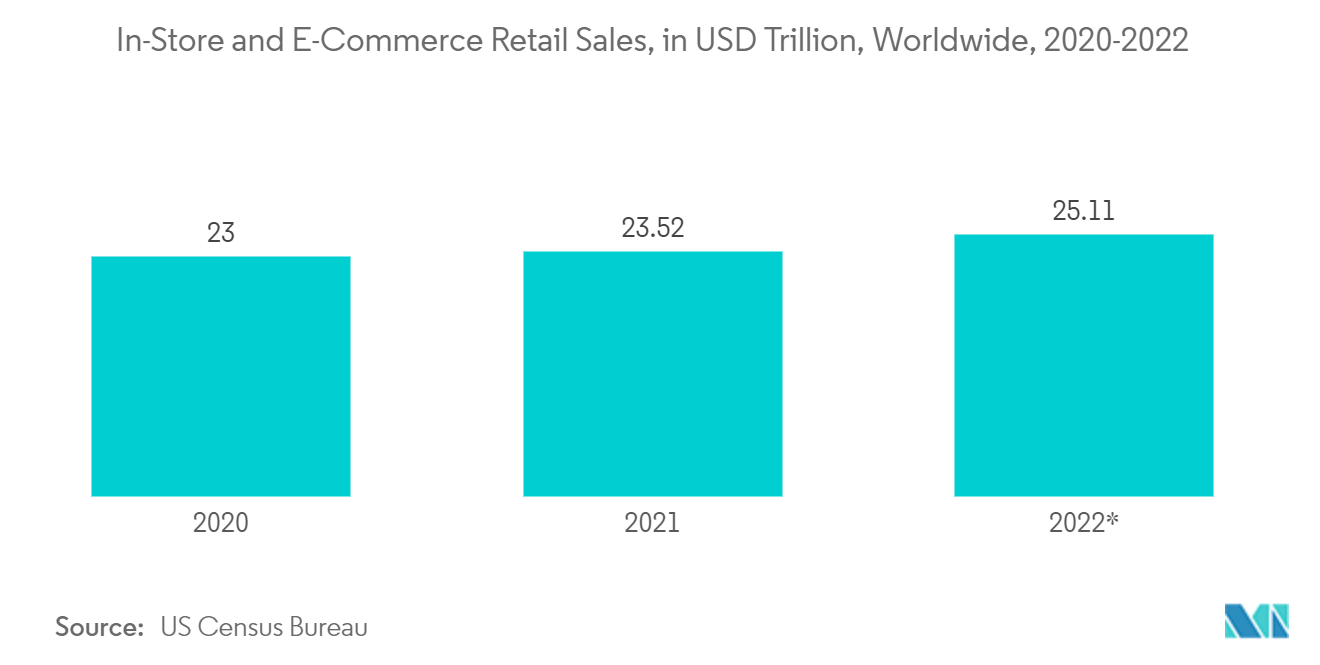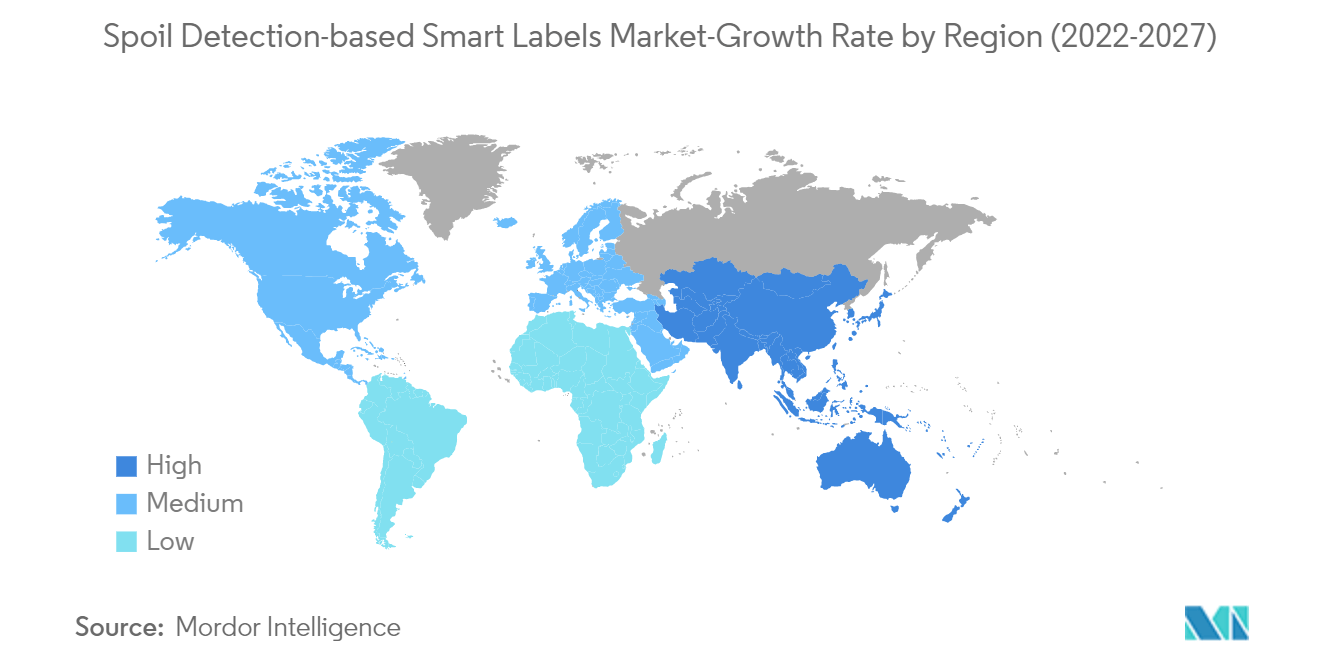Market Trends of Spoil Detection-based Smart Labels Industry
This section covers the major market trends shaping the Spoil Detection Based Smart Labels Market according to our research experts:
The RFID Segment is Expected to Hold a Major Market Share
- The trend of integrating sensors such as RFID with spoil detection-based smart labels is likely to be introduced across various industry verticals in the next few years. RFIDs have a limited cost and negligible maintenance, which make them appealing for numerous applicative scenarios such as manufacturing, logistics, healthcare, agriculture, and food.
- Smart label development is an innovative application of RFID. Typical RFID systems comprise two major components: the reader and the label. The smart label consists of an RFID system and a graphical user interface (GUI).
- Principally, the two main components involved in the RFID system are the transponder (the label attached to the antenna) and the interrogator (RFID reader). Spoil detection-based smart labels convey the exact degree of freshness of the food material by changing its texture and color or communicating to the system with the help of RFID tags.
- According to FAO data, on a global level, about 33% of food is wasted in the supply chain. As per the European Commission, this figure amounts to over 40% of food products before reaching the retail market. The key reasons for this food waste in the supply chain range from their production origin, transformation, and packaging, largely for their aesthetic reason, HORECA purchasing management, distribution, and retail. Many distribution centers and warehouses have been investing in improving process efficiency to increase the efficiency of the processes as a part of improvement programs. Such investments are expected to drive growth for RFID-based smart labels.
- RFID technology has generated demand for a printer capable of concurrently printing text, bar codes, and graphics on the label's surface in addition to reading, programming, and verifying the RF tag embedded in the label. Smart label printers function as traditional printers when creating graphics, bar codes, and human-readable text. They also have RFID encoders and readers embedded inside.
- An RFID system enables unique traceability per product without requiring a direct line of sight for data reading. This exclusive automation results in the visibility of supply chain and logistics processes, which reduces errors, unknown losses, and out-of-stock to a minimum while simplifying and lowering inventory management and purchasing forecasting.

North America is Expected to Hold the Largest Share
- North America is one of the largest markets for spoil detection-based smart labels globally, with the United States accounting for a significant share in the region. The country's huge demand can be attributed to the vast presence of small and big retail stores. The United States is led by retail giants, such as Walmart and others, driving the upsurge in activity, largely contributing to the country's growth of the studied market.
- According to the US Department of Agriculture, food waste is estimated at 30-40% of the food supply annually in the United States. Food waste has led to huge food insecurity in the country. The country is expected to witness 50 million people suffering from food insecurity in 2022 alone. This staggering increase in food security will likely fuel large-scale initiatives to reduce food spoilage, driving the market growth. To address the alarming food wastage on the shelves of various retail stores, vendors are introducing new spoil detection based on smart labels to minimize such wastage.
- Technology proliferation in the studied market has allowed smart labels to predict freshness and help consumers and distributors understand spoiled ones. Research studies have helped develop indicator labels that can indicate on-package freshness for guavas without altering the quality of the fruit.
- Also, USDA and FDA (Food and Drug Administration) announced a framework agreement to label cell-based meats and potentially other food products in 2019. This is expected to augment the market size in the country further. Vendors in the country invest in technologies that drive greater traceability throughout their supply chains, with blockchain increasingly used along with spoil detection-based smart labels.
- Besides the rise in healthcare expenditure in the country, RFID technology is expected to propel the spoil detection-based smart label market in the healthcare and medical sectors. The increased spending is anticipated to create new deployment avenues for spoil detection-based smart labels. Overall, the market is expected to mature significantly in the country over the forecast period.


